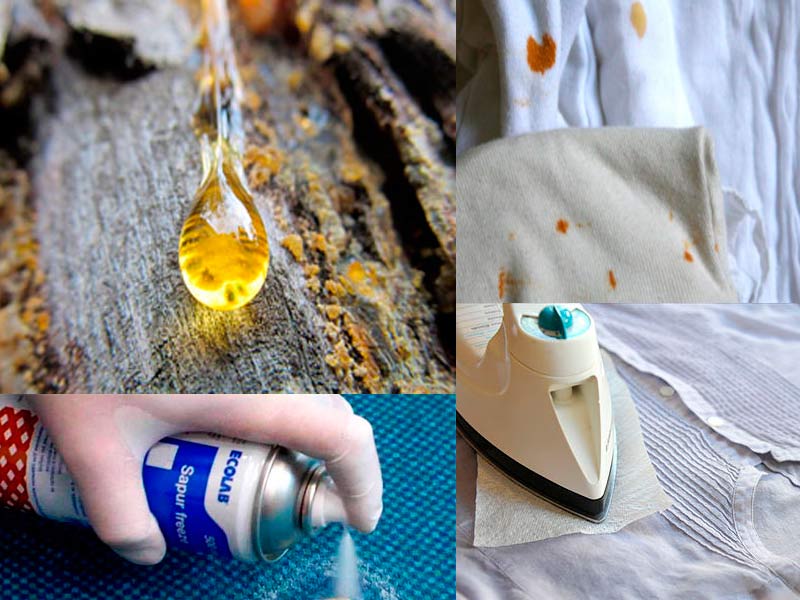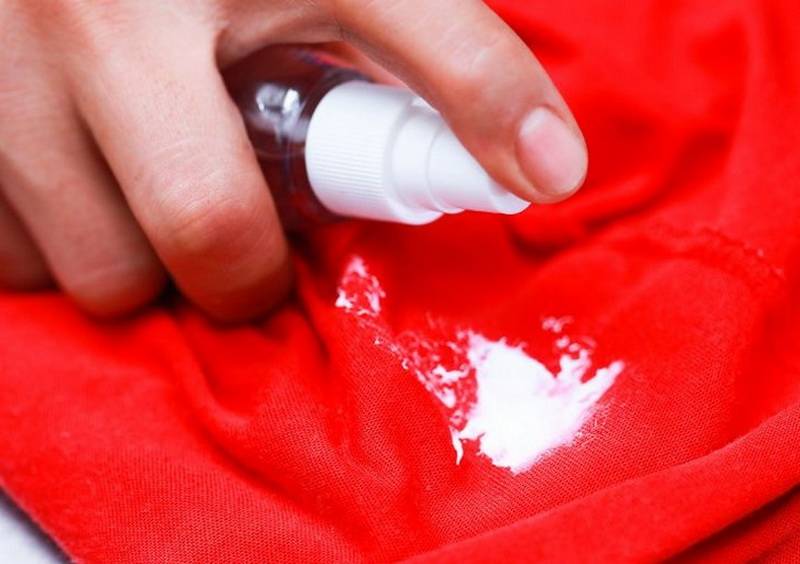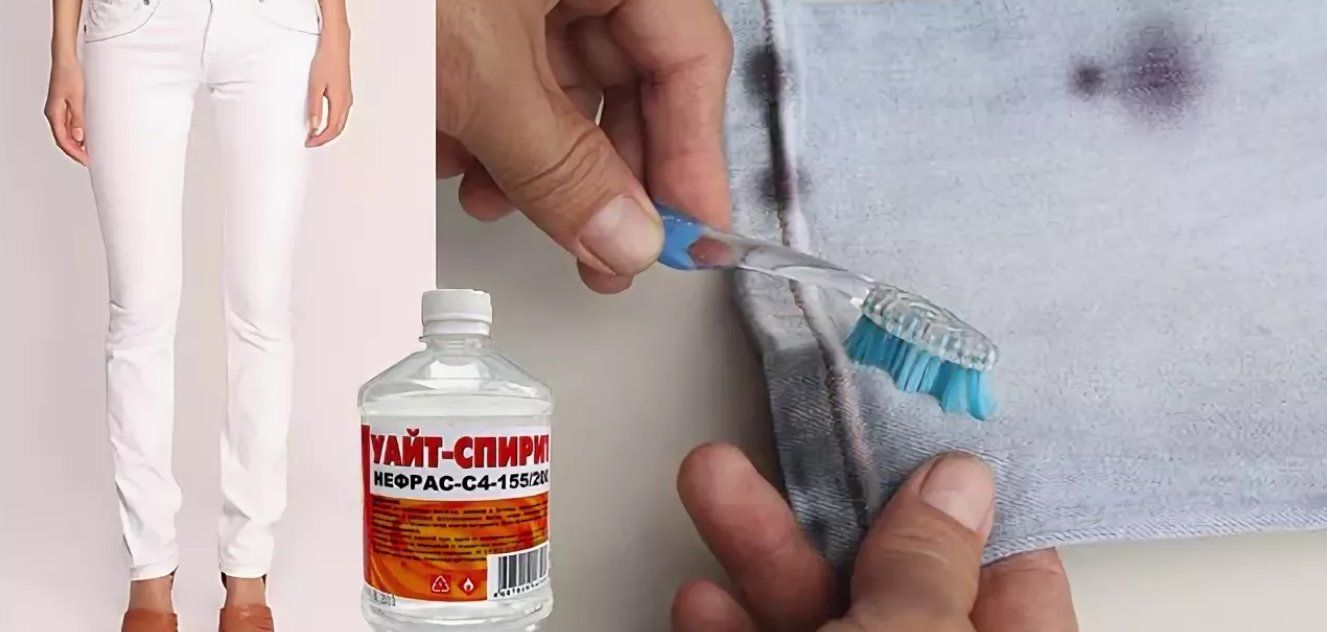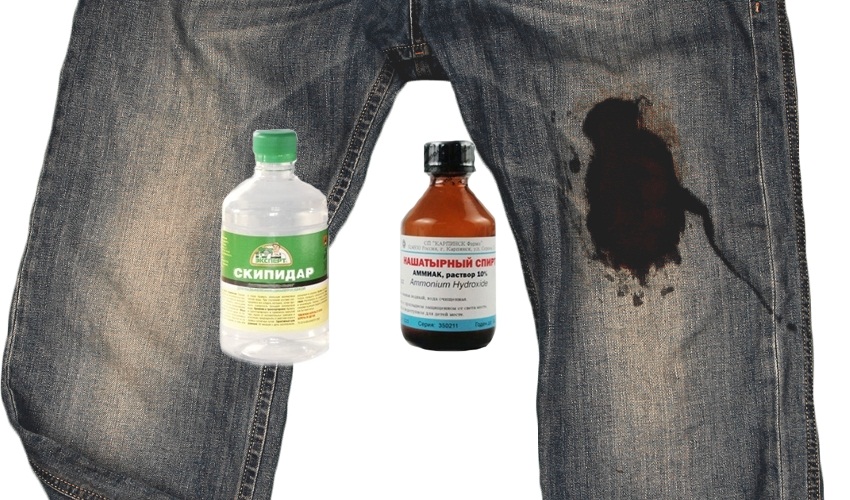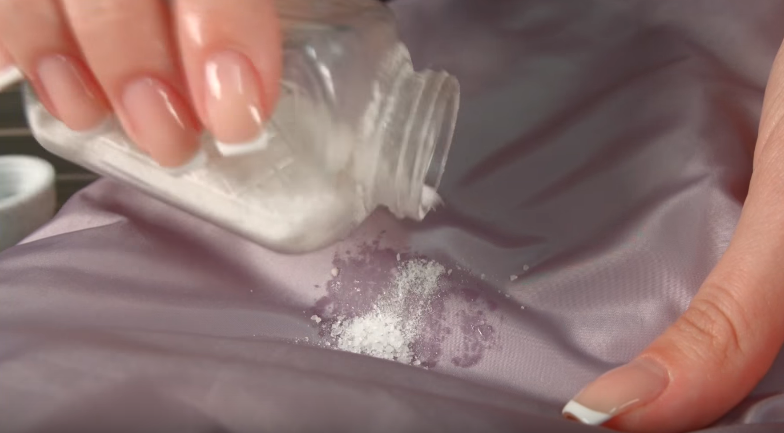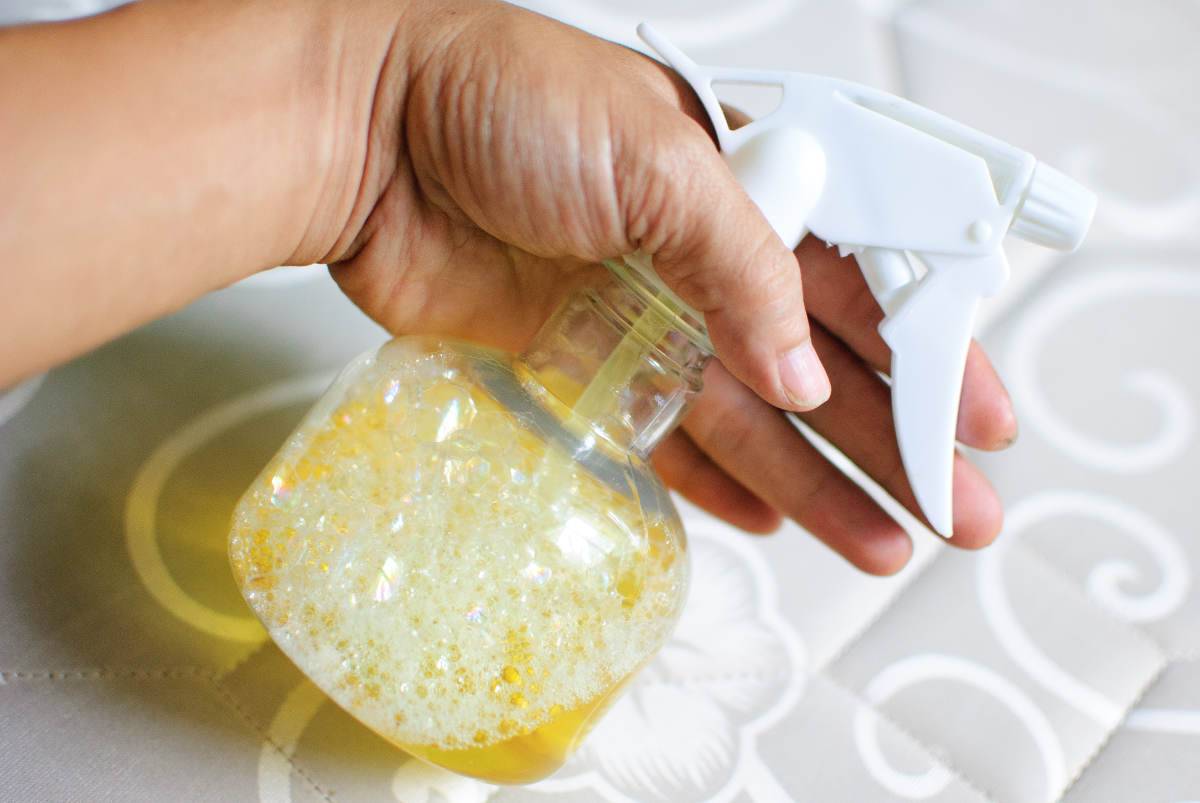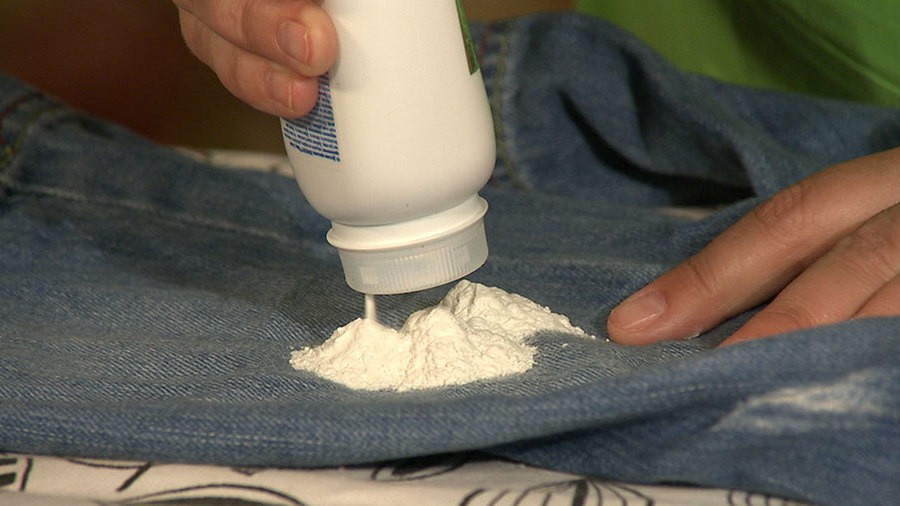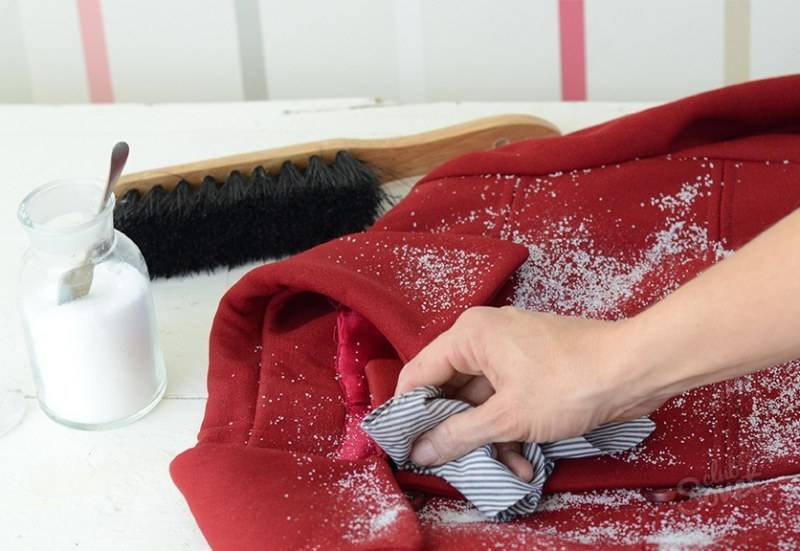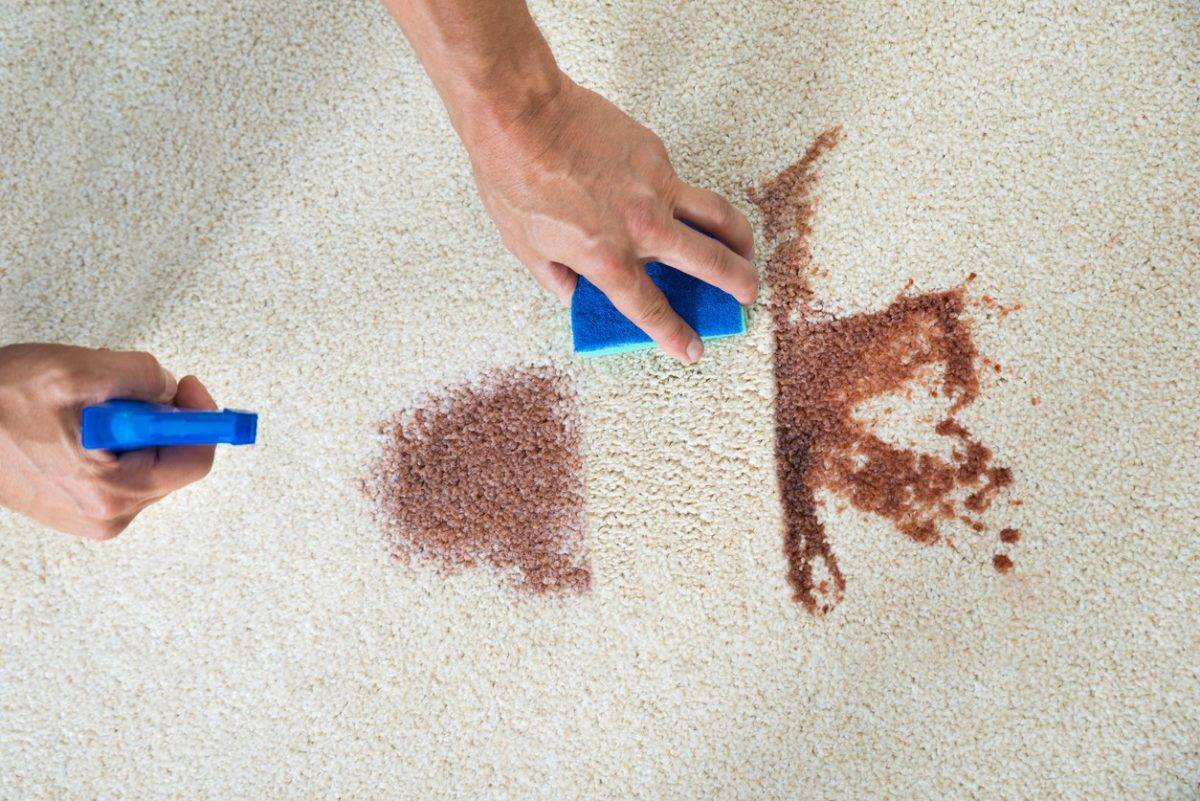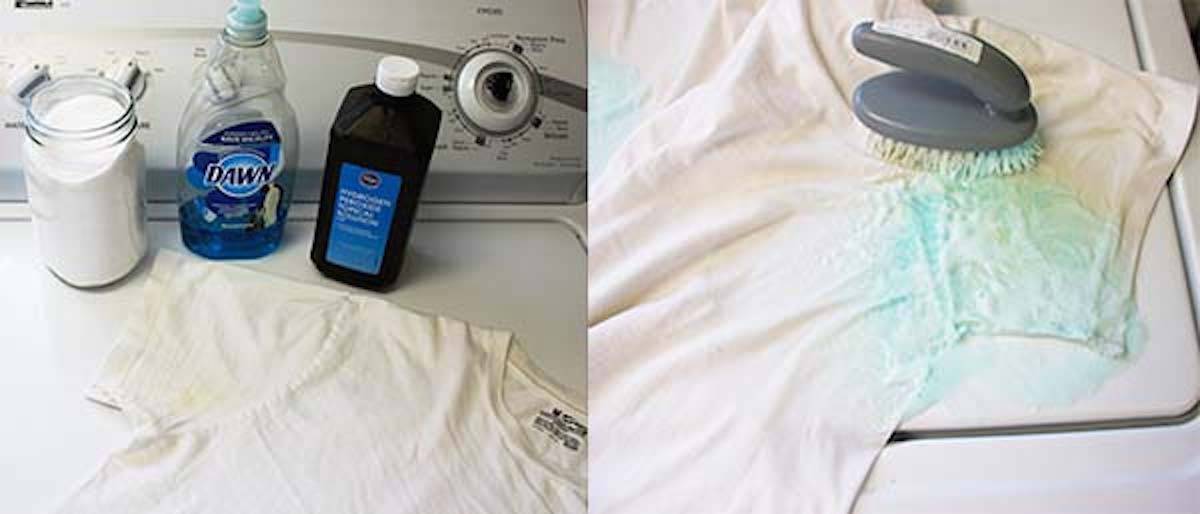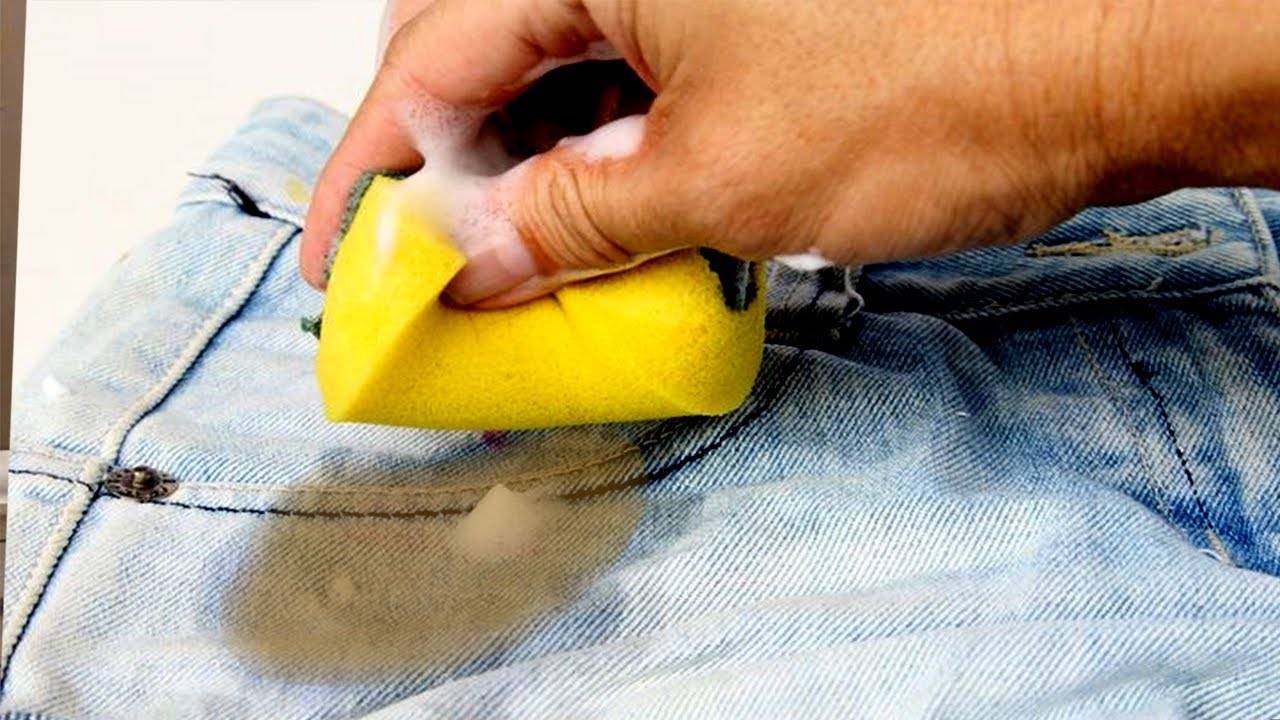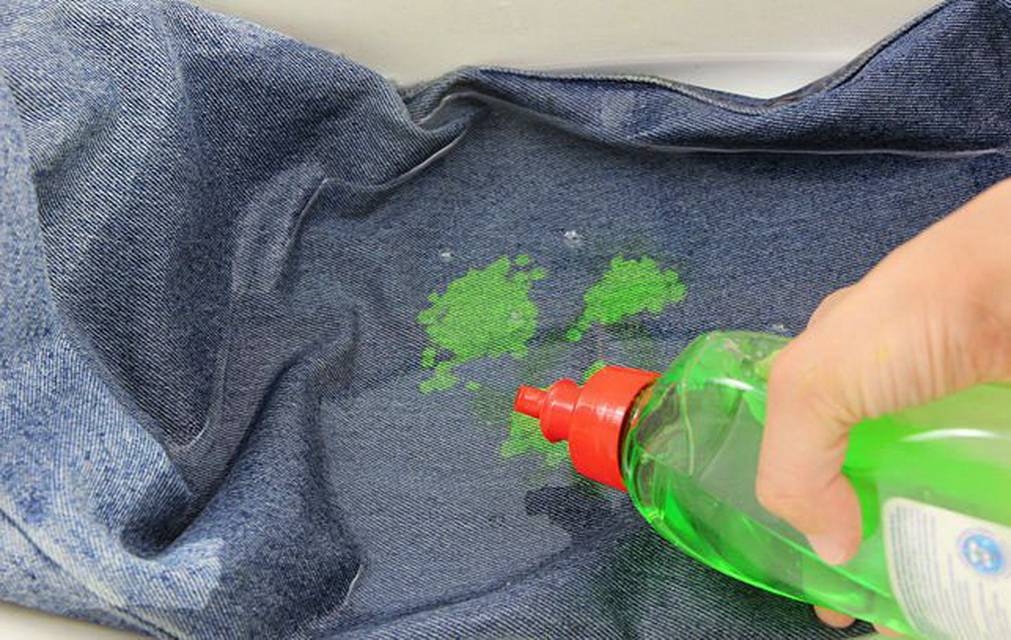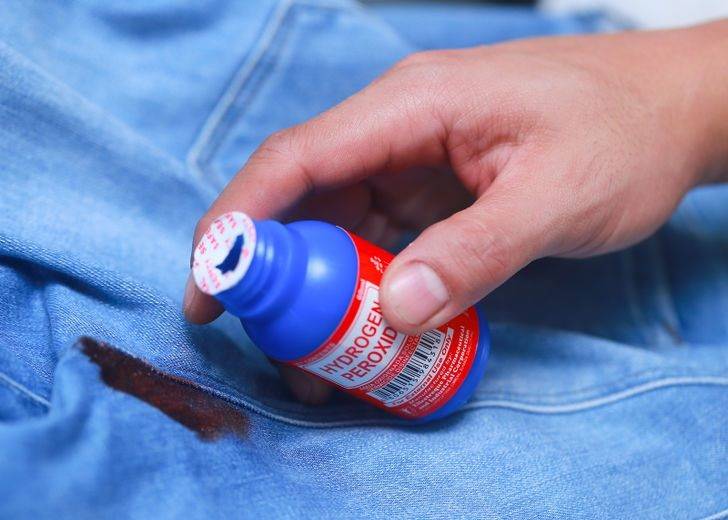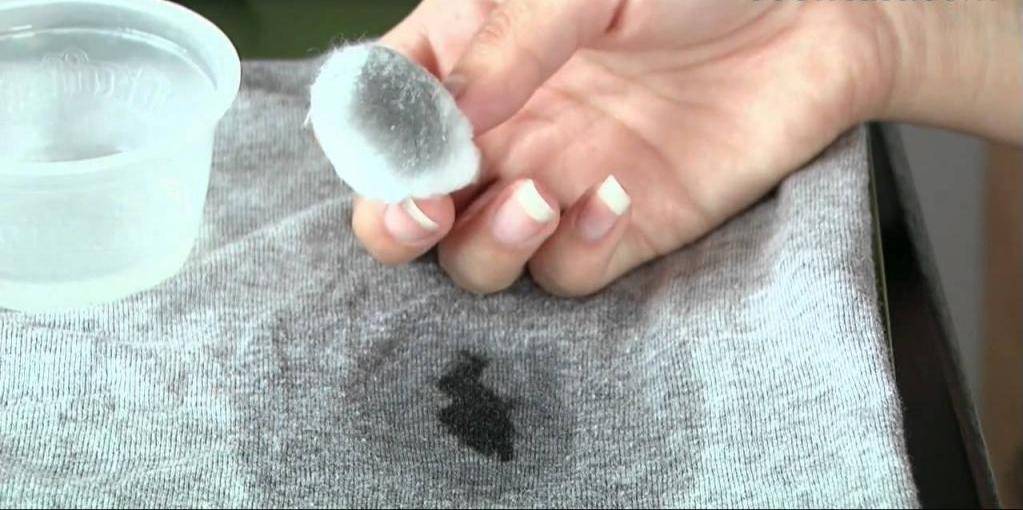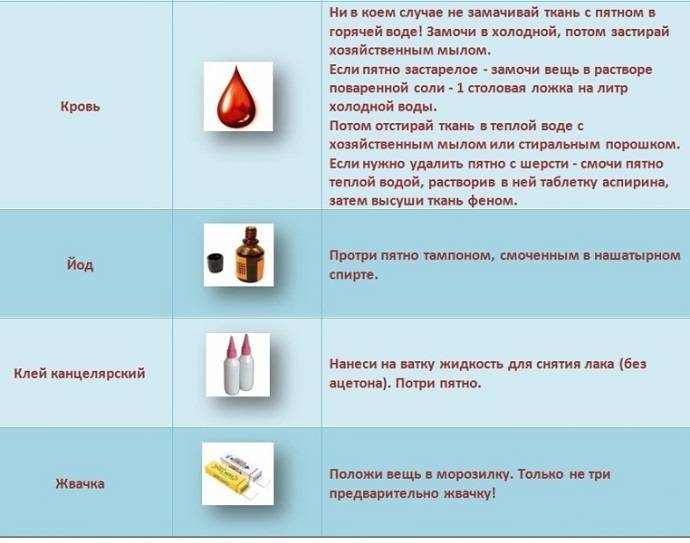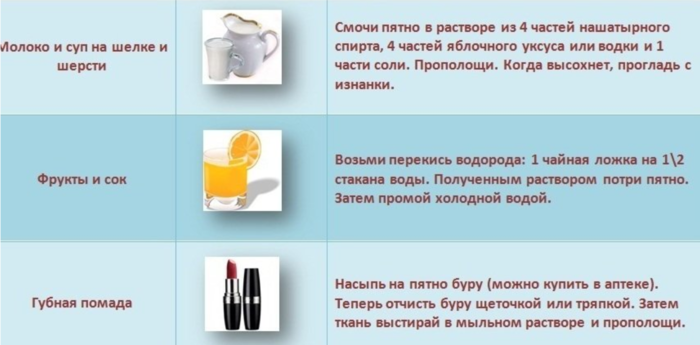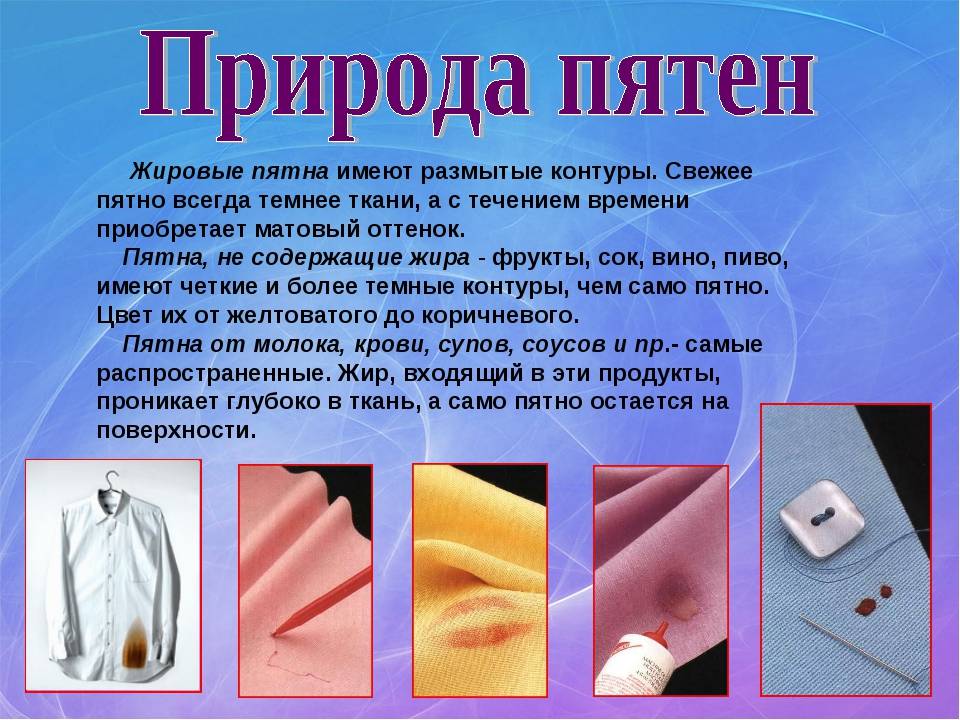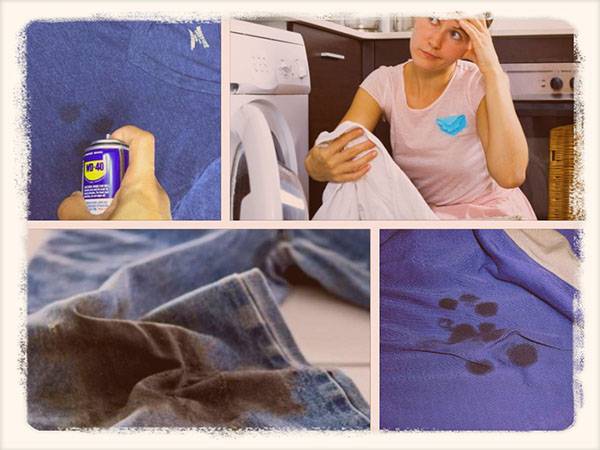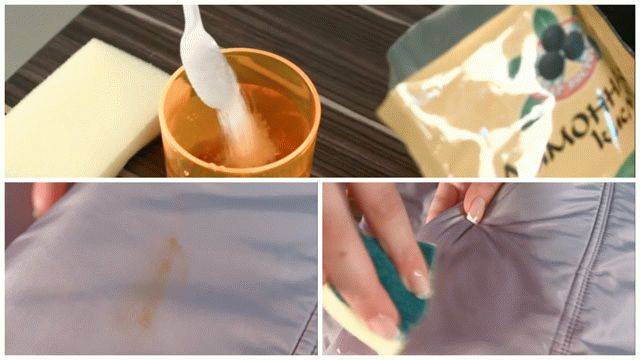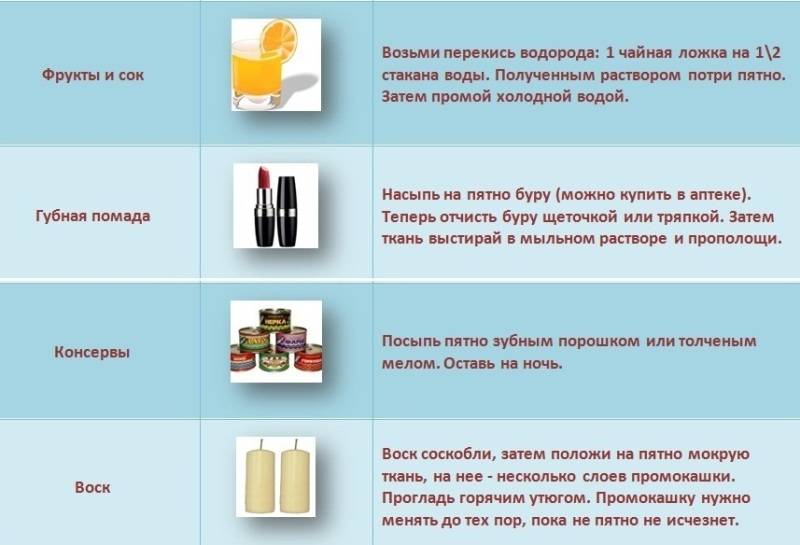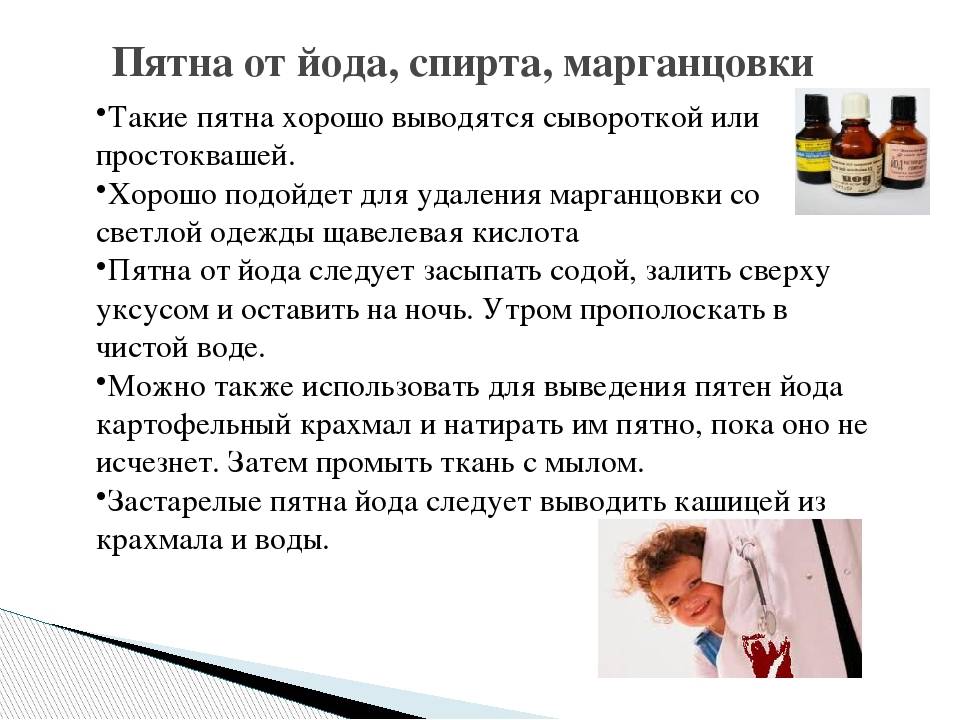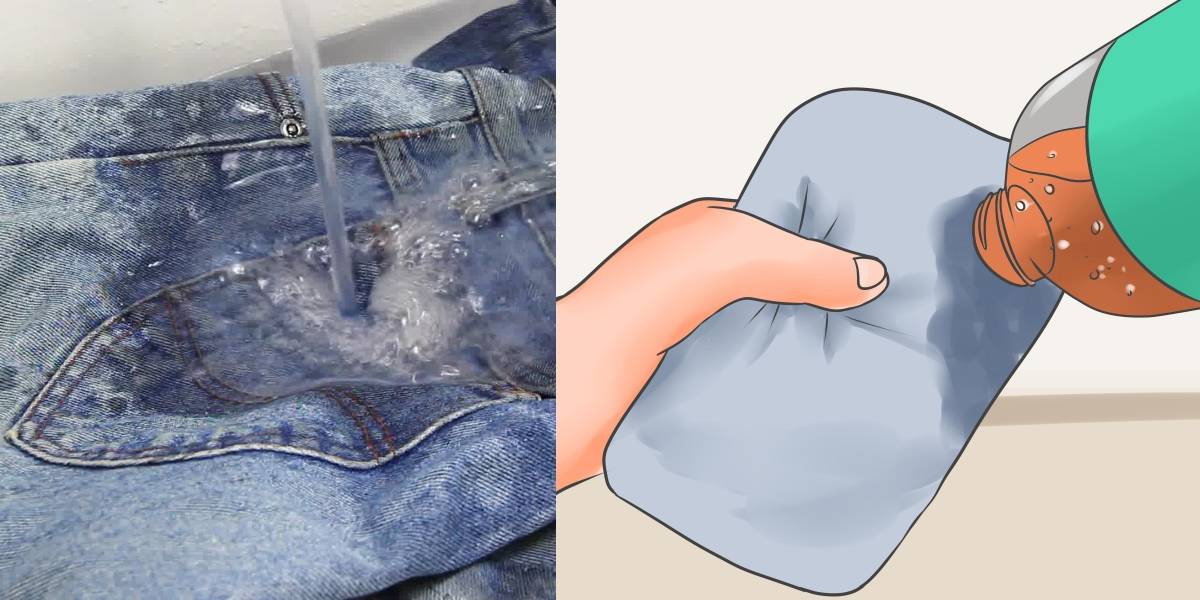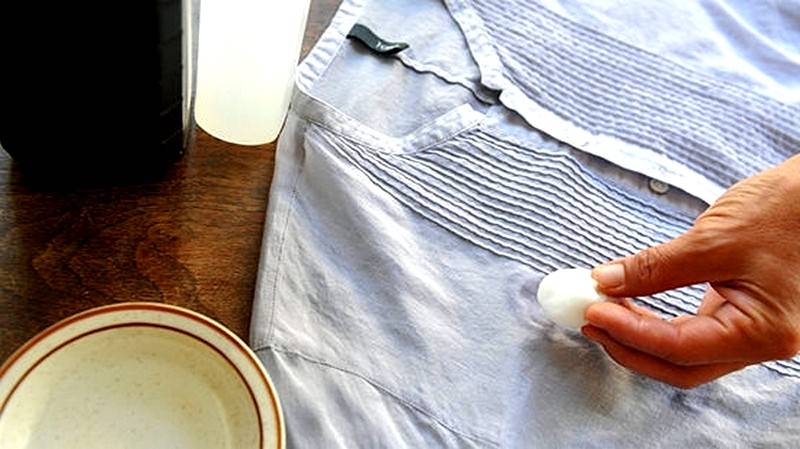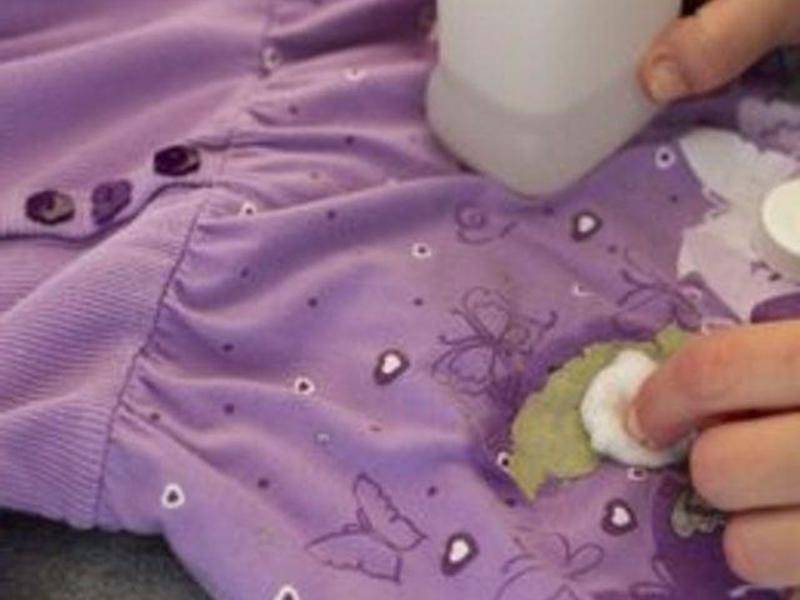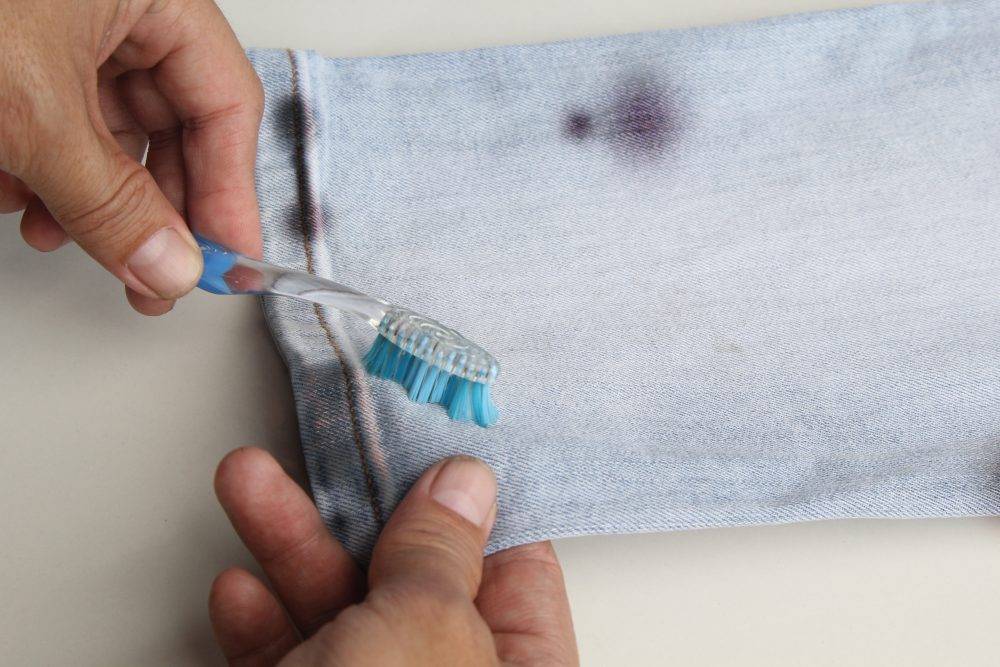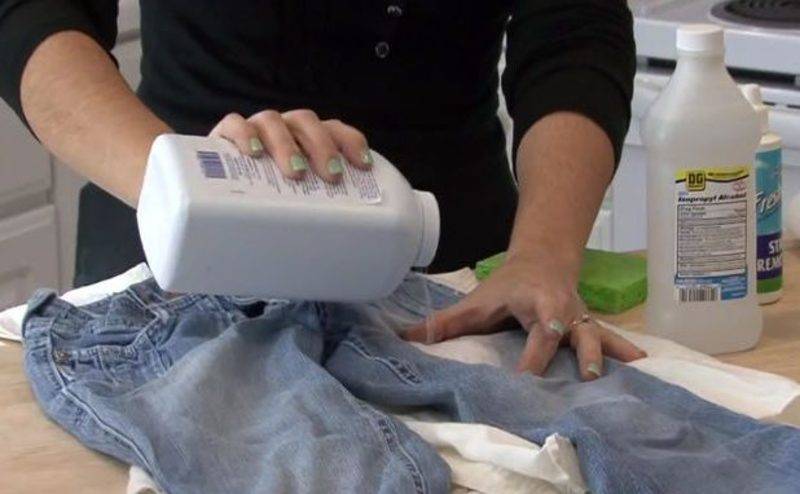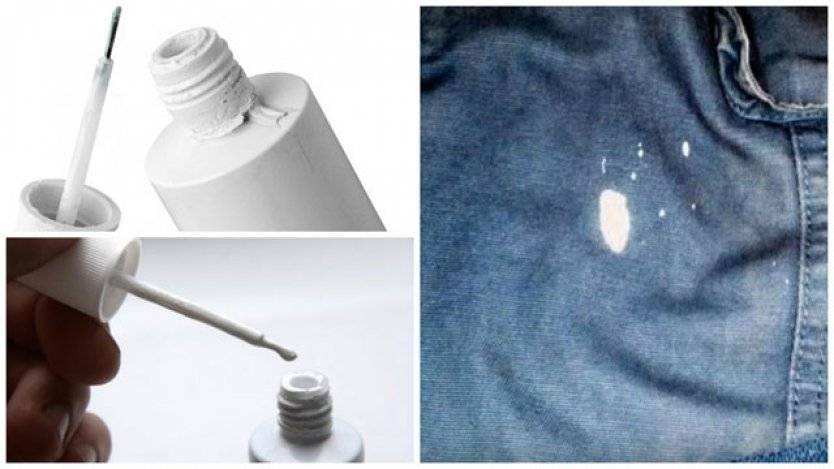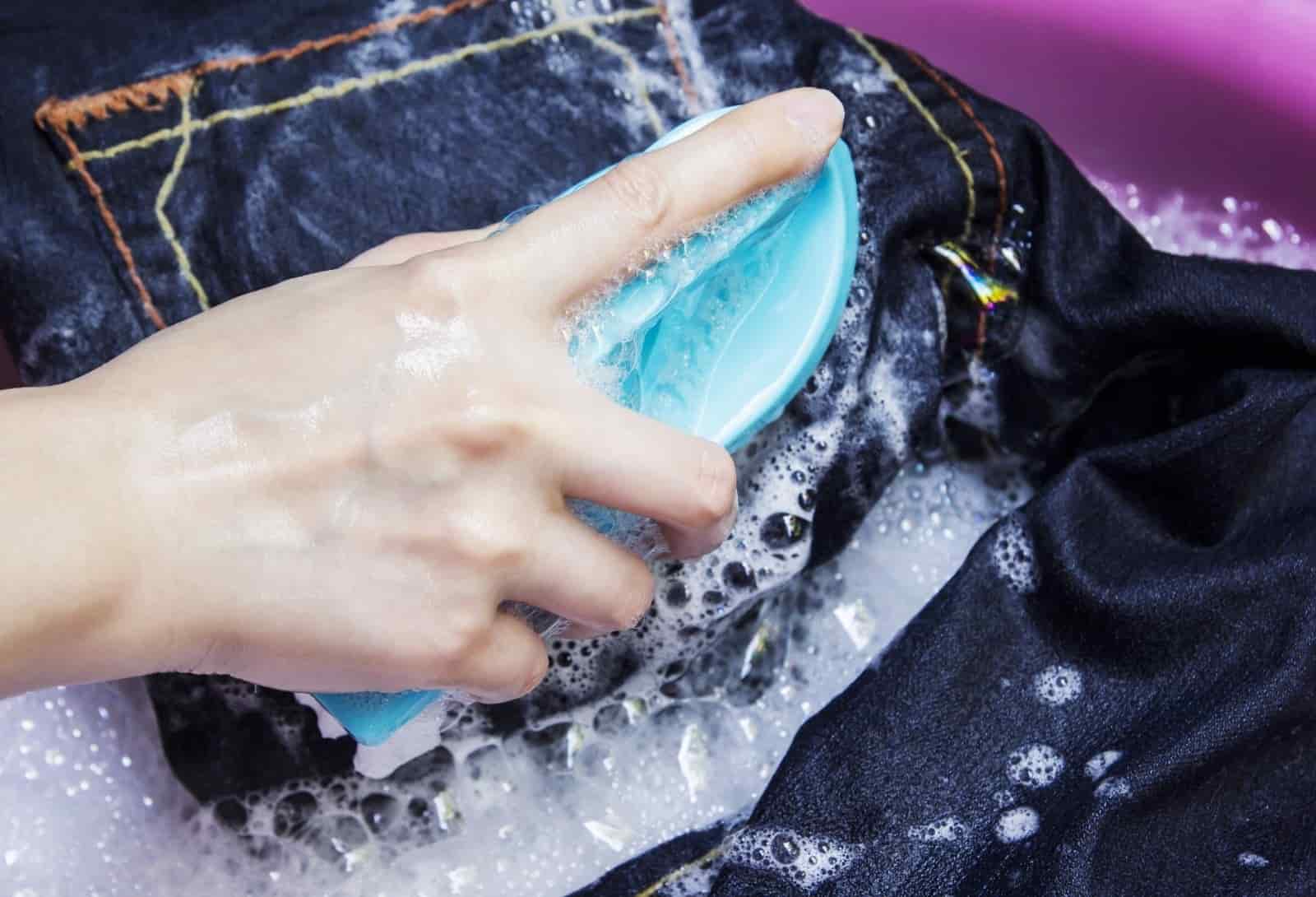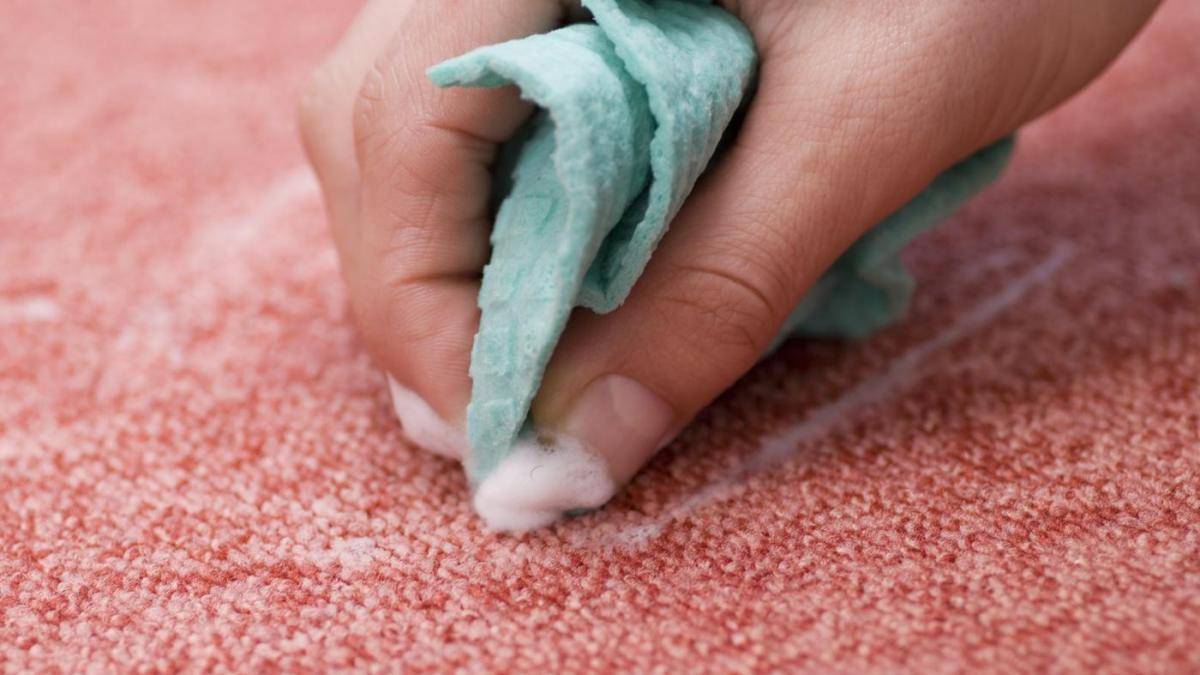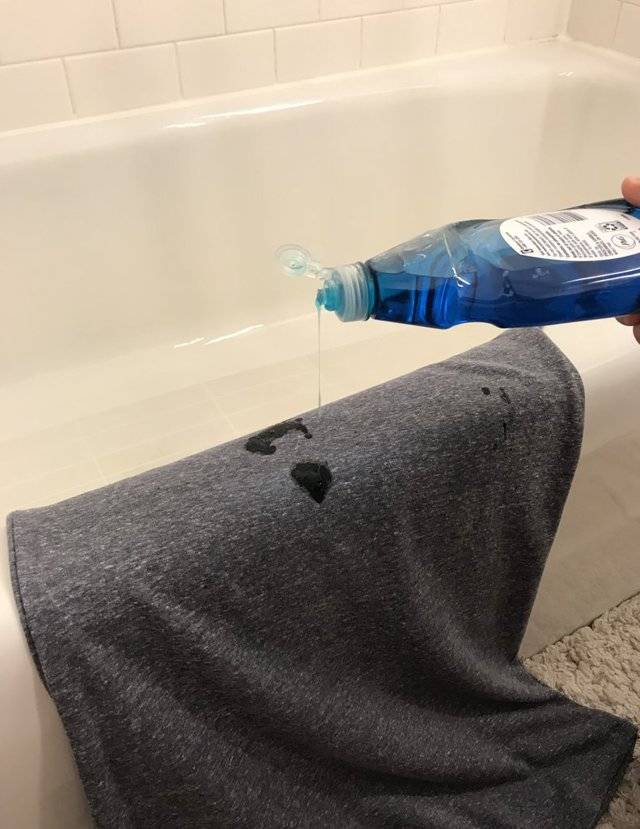Tips & Tricks
Basic tips for removing sand and clay stains:
- Stains are removed by treating them with chemical or folk remedies.
- Dried stains stick to the fabric and are more difficult to remove.
- Clothes to be chemically treated must first be brushed and shaken out well.
- When removing stains from lining garments, check that the lining is clean. If so, the lining must be ripped up before treating the clay stains so as not to spoil its color with stain removers.
- Before starting work with stain removers, check their effect on the color of the fabric. This is done on an inconspicuous place of clothing - at the seams, folds, where the selected product is applied for 2-3 minutes. If it does not change the color of the fabric, it can be used to remove clay or sand stains.
It is important to know not to use:
- acetone on acetate fabrics;
- means for removing rust on fabrics with metal threads;
- jelly water on woolen and polyamide fabrics;
- alkaline agents on woolen and silk fabrics;
- steam treatment of moiré viscose and silk fabrics.
When handling any contamination, you should adhere to these rules in order to achieve successful removal of sand and clay stains.
Share link:
Features of removing solid oil from clothes
Solid oil is an oily substance that leaves greasy streaks on the fabric. If the contamination on the surface of the clothing has not yet dried, it is removed with a paper towel. It must be applied to the affected area, blotted and left to absorb the substance for 5 minutes. Long-standing contamination is removed by steam treatment or hot water. During the procedure, you need to gently walk the surface of the fabric with steam, soak it in water and send it to dry.
An unpleasant smell is removed by the fabric softener; to enhance its effect, the soiled item must be dried in a room with moderate humidity. What rules should be followed in order to clean the stain:
- the water temperature should not exceed 40 degrees;
- old traces are pre-treated with steam before cleaning;
- before wiping off contamination with various preparations, it is necessary to test them on the inconspicuous side of clothing to make sure there are no side reactions;
- cleaning with steam or detergents must also be carried out from the back side;
- it is forbidden to wash fabric contaminated with grease together with other things;
- when using concentrated solutions, it is necessary to apply them only to problem areas, trying not to touch a clean surface;
- it is necessary to carry out the procedure with household gloves to prevent contact with the skin. This will help prevent an allergic reaction;
- it is better not to use aggressive chemical products on silk and linen items. It is worth using folk methods.
Important! Before removing the contamination, you should carefully study the labels on the clothes in order to prevent damage to it.
Stain removal rules
If the oily substance on the surface of the fabric has not yet dried, it can be cleaned with a soft cotton cloth. It will absorb the grease, preventing its further spread and the occurrence of additional streaks. To avoid worries, you need to find out in advance how you can wash off the grease.
Old dirt must be softened with hot water and steam before direct cleaning. Cleaning with a cleaning compound is carried out carefully.Movements are directed from the edges of the spot to the center. After the end of the procedure, the injured item must be washed, dried and smoothed. The unpleasant odor is eliminated by means of an air conditioner. To enhance its effect, the cleaned item is dried outdoors or indoors, which is equipped with a ventilation system.
You also need to follow the following rules:

Washing temperature should not exceed 45 degrees
- The water temperature for washing should not exceed 45 degrees.
- Processing must be carried out from the wrong side. In this case, an absorbent cloth must be placed under the dirt.
- Chemicals must be used in full accordance with the instructions that come with them.
- Before wiping off the grease, the affected tissue must be prepared for processing.
Many people use several methods at once to get the maximum effect.
Special care should be taken when cleaning colored, delicate and synthetic materials. Aggressive agents can damage tissue structure
In this case, you need to use gentle methods. If during cleaning it was not possible to wash off the oil contamination, you should contact a specialist.
Choosing a detergent
Almost everyone has special work clothes. Someone in it works in the garden on weekends, someone is engaged in repairs. But what if they get dirty with oil or other grease? Some stains should be washed with special detergents.
Robe stained with oily substances
Engine oil, grease for rusty parts ... Oil stains, traces of fuel oil on overalls are the most common problem. In most cases, you can use technical grade gasoline, which is best for removing greasy stains. Apply a little gasoline to a sponge and rub the stain thoroughly until it disappears. Then wash your robe with regular powder or gel. You can also use the Crystal universal detergent.
Dishwashing gel as a degreaser
No gas on hand? an effective detergent for washing oiled overalls - dish gel. Apply it directly to the dirt, brush. You can also add some gel to the drum during the main wash cycle.
Special substances
There are also special detergents for washing workwear. Compared to classic laundry detergents, they are uncompromising in terms of grease and dirt. A roba, especially a canvas one, can easily withstand this kind of treatment.
Special substances have advanced degreasing capabilities, thereby eliminating oil stains, traces of oil products. There are many such detergents on the market.
Expert opinion
Evgeniya Taran
Read the label to determine if the selected substance is suitable for the dirt to be removed.
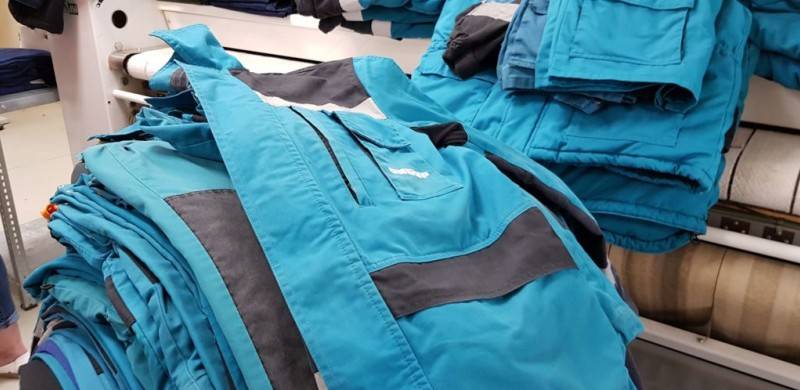
Stain removers
Chemistry will help to get rid of the old oil stain, effectively remove the oil trace.
A good detergent for washing work clothes is stain removers. But in this case, keep in mind that some of them are strong chemicals that are harmful to the environment.
Expert opinion
Natalia Osadchaya
One option is to use carpet cleaners such as Bioclin or Khimitek. After removing individual stains from dirty workwear, wash them as usual.
Cleaning:
- Cover the stain with a dry, absorbent cloth.
- Apply the cleaner, let it sit for 10-15 minutes to dissolve the dirt.
- Do not let the cleaner dry on the stain.
- After 10-15 minutes, replace the bottom cloth, which has gotten dissolved dirt, with a new, dry, absorbent cloth.
- Use a damp cloth to clean the stain until it disappears.
- After removing the dirt, rinse the cleaned area.
- Wash your clothes.
Washing and dry cleaning workwear can be tricky. If none of the above methods helped, remember: the robe is not for beauty, but for work. Don't worry about dirty footprints.Either accept it or buy some new workwear.
How to remove an unpleasant smell from clothes from fuel oil
- Using one or another cleaning agent for fuel oil stains often leaves an unpleasant odor. Routine air drying will not always help to deal with this.
- You can remove the smell with aromatic oil. Any scent will do, but eucalyptus or pine oil will be more effective in dealing with the effects of lubrication.
- You will need 2 cotton pads. Apply essential oil to them according to the size of the spot. Place one disc under the place of contamination, the other on top. Leave the clothes to soak in the scent for about an hour. If essential oil stains appear, a regular wash will remove them.
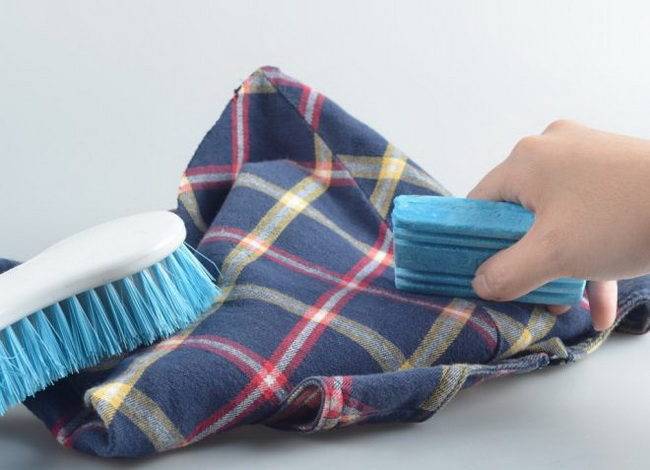
To remove fuel oil from clothes at home, you should not only choose a cleaning agent, but also apply it correctly to a specific type of fabric. Timely cleaning will help to effectively deal with pollution. Therefore, start removing the stain as soon as you find it.
Features of removing stains on denim
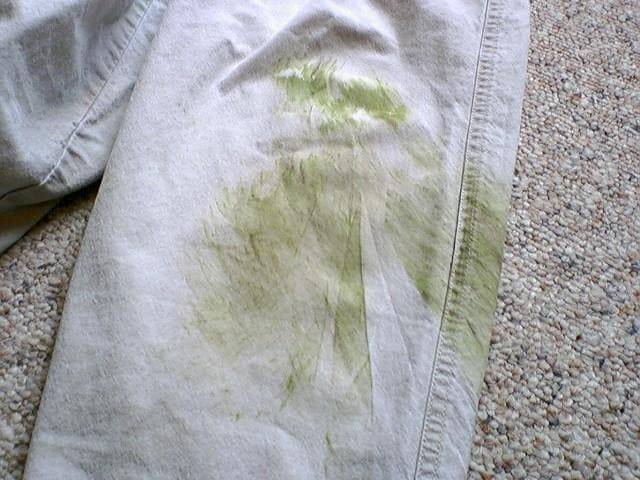
Denim has the ability to absorb any dirt, so if you ignore the problem, you may encounter damage to your favorite things. When washing jeans, remember the following rules:
- Clothes with complex dirt need to be pre-soaked. To do this, use soap shavings or any other cleaning agent. Soaking time varies between 30-60 minutes. It is not recommended to keep jeans in water anymore.
- Machine wash is permissible at temperatures up to 40 degrees, otherwise the denim may lose its shape and color.
- It is not recommended to use stain removers and bleaches in such cases, as they can wear out the fabric and lead to a loss of its color characteristics.
- It is recommended to wash dark jeans with a small amount of vinegar, it helps to preserve the color and enhance the effect of the washing powder.
Some denim items are considered fragile enough, therefore, it is forbidden to use aggressive chemical products for washing them. Many housewives use homemade stain removal methods:
- Thoroughly rub the problem area with half a bar of laundry soap, moisten with a little water and leave the thing for 1 hour. After that, it is rinsed in cool water and sent to the washing machine.
- Pour 1 spoon of turpentine into a large bowl of water, mix the components. Put dirty clothes in a cup, leave for 20 minutes and rinse in clean warm water. To get rid of the unpleasant odor, the denim item is sent to the washing machine and washed with powder and conditioner.
- To preserve the color features of the fabric, 2 tablespoons of apple cider vinegar are poured into a basin of water, the laundry is soaked in the resulting solution, and then washed with an automatic machine.
If home methods do not help remove streaks, you need to use chemicals or take the item to a dry cleaner.
If the stain is fresh
The situation is somewhat clearer if not much time has passed since the "tragedy". Then the chances of success increase, which means there is hope to wash away the pollution. A stubborn oil stain that has permeated the base of the fabric is more difficult, and sometimes almost impossible, to remove.
Most often, measures are taken immediately, so it is doubly useful to know all the possible ways to remove the stain. And there is still a last resort - going to dry cleaning. But you can try to solve the problem yourself, in an attempt to save your favorite jeans or shirt from premature disposal. Practice shows that fresh lubricant contamination is removed the first time. The main thing is to take action on time.
How to remove foundation
When using special and auxiliary means, it is necessary to take into account the type and color of the fabric from which the product is made, choosing a gentle option that cannot affect the quality and appearance of the clothes.It is advisable to check the reaction of the tissue to the product in advance by applying a small amount from the wrong side. It is recommended to hand wash silk and cotton fabrics after processing. Woollens can be sprinkled with starch in the area of contamination, leave until completely absorbed, and then brushed. For synthetic, denim fabrics, it will be useful to pre-soak for 1-2 hours in warm water, after which the item can be washed as usual with an additional rinse. Dry indoors or on the balcony.
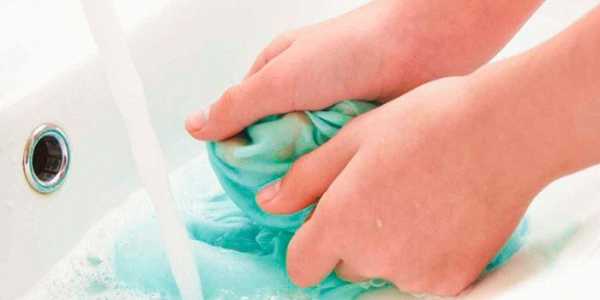
With white clothes
To remove traces of makeup from white things, stain removers are used, the active substance of which is chlorine. They are applied directly to the stain (for 10-15 minutes), added with pre-soaking, into the machine during washing. Laundry soap Antipyatin deeply penetrates the fibers of the fabric, has a degreasing effect. Do not use dark soaps as they can stain white clothes. It is most difficult to wash foundation from white clothes if they are made of natural fabric. You can try removing the stain using ammonia and salt:
- Pour ammonia on a cotton pad or swab.
- Apply the disc to the stain, wait 5-10 minutes.
- Remove disc, sprinkle generously with salt. Leave on for another 10 minutes.
- Wash by hand or machine, extend the normal wash time.
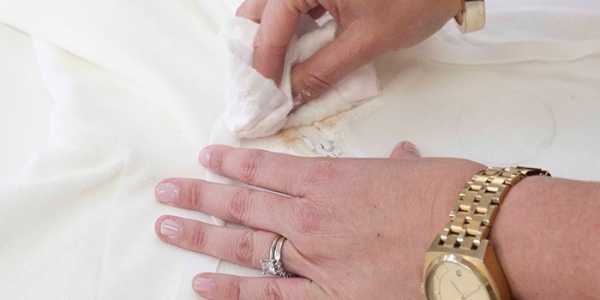
Synthetic fabrics
The easiest way to get rid of the effects of makeup on synthetic materials. Simple stain removers are used for colored items or containing chlorine, if the product is white: after soaking the item in hot water for 6 hours with the addition of a product, you can then effortlessly wash it by hand. If you need urgent help, you can use ammonia and baking soda:
- Apply alcohol using a swab to the desired area with blotting movements. Wait 10 minutes.
- Sprinkle with baking soda, rub with your hands until the stain disappears completely.
- Remove soda residues, rinse the area with cold water, dry with a hairdryer.

With denim
When you apply foundation to your neck, traces of cream may remain on the collar of your denim jacket. The dense fibrous fabric deeply absorbs fats and dyes. You can wash the foundation from denim clothes with a face cleansing tonic, dishwashing gel, and gasoline. Stain removers are not used - the fabric may shed under their influence. It is also not recommended to wash denim with solid soap, it eats into the fibers, multiple rinsing will be required. You can remove the stain on the product with citric acid or juice:
- Pour warm water into a basin, dissolve juice or acid in it.
- Soak clothes in this water for 1-2 hours.
- Wash normally.

How to remove dirt stains from clothes
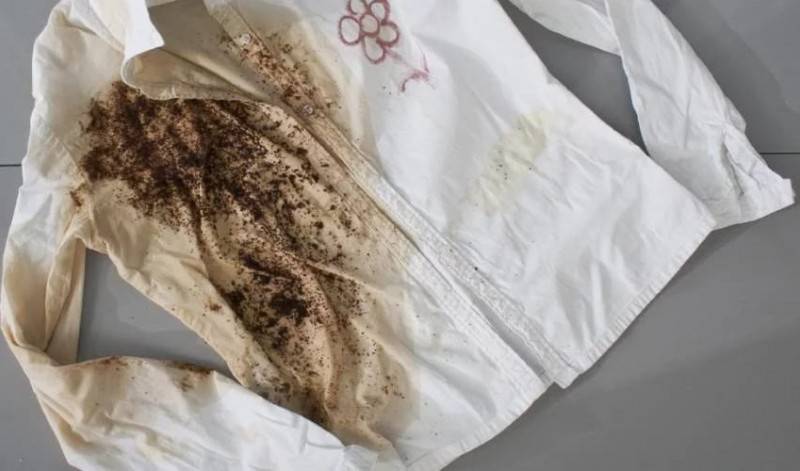
Today, there are many ways to help remove the dirt that has appeared. The most popular ones are presented below:
- A borax in combination with a soda-soap solution will help remove stains on a white T-shirt. For the cleansing procedure, you need to grate a small piece of soap on a grater, add borax and soda in equal amounts, mix all the ingredients. The resulting solution must be given time to infuse, and then apply it to the problem area and leave for 30 minutes. After that, the clothes are rinsed in warm clean water and sent to the washing machine.
- A mild vinegar solution can also help remove stains on white. To cope with the problem, you need to combine a spoonful of plain water and the same amount of apple cider vinegar, mix the resulting solution. Pour the vinegar liquid into a bowl with a little water and leave the dirty product in it for 30 minutes. After that, the clothes can be washed in an automatic machine.
- Soda ash can remove dirty marks on a down jacket or jacket.For cleaning, you need to add a couple of spoons of the product to the drum of the washing machine, activate the standard wash mode (with a temperature of up to 70 degrees) and wait until the end of the process.
- Potassium permanganate helps remove dirt on jeans. For the procedure, it is necessary to dissolve a few drops of the product in a basin of water so that the water turns a little pink. Next, you need to grate half of the soap bar and pour it into the resulting liquid. Soak a dirty item in the solution for 20 minutes, then rinse and, if necessary, send to the washing machine.
- Citric acid will help to remove traces on a white jacket. To eliminate the problem, you will need to combine 2 tablespoons of the product with 1 liter of water, put stained light clothes in the resulting solution, hold it for 20 minutes and transfer it to the drum of the washing machine. You can save time and add citric acid directly to the machine along with the powder. At the same time, it is recommended to wash clothes at a temperature of no more than 40 degrees.
You can use baking soda to remove fresh stains. Add 2-3 tablespoons of the product to the washing drum along with the usual amount of powder, then activate the "delicate wash" mode.
Tips & Videos
To remove a greasy stain without spoiling the product, you must adhere to the following recommendations:
- Any substance can be used only if it is safe for the fabric on which it will be applied. Before proceeding to the processing of the whole thing, the product should be checked on an inconspicuous area of the product.
- Do not try to dry the grease off the fabric as this will make it harder to remove the stain.
- It is necessary to process the product by placing it on a washable surface, diaper or napkin. Do not do this on a sofa or carpet. The oil is more likely to stain the surface under the item.
- Do not increase the proportions of aggressive detergent components; it is better to repeat the procedure several times if necessary.
- Some items, such as suede and leather, are best taken to dry cleaning.
In fact, it is not difficult to wash sunflower or other vegetable oil from clothes. It takes a little time, effort and persistence.
Basic ways
Even children who are neat by nature manage to stain their clothes in the sand. They are not to blame - this is the nature of the interaction of low-quality sand with fabrics. Mom knows the main ways to remove sand stains, and she successfully launches any clothes at home without resorting to dry cleaning services.
The following rules help to successfully remove sand stains from clothes:
- remove dirt immediately after it appears, since old stains are difficult to clean;
- before removing sand stains, clothes must be cleaned of other dust, shaken out thoroughly, brushed;
- to remove sand pollution from silk and woolen clothes, do not use alkaline agents;
- do not use acid-containing products to clean stains from linen and cotton fabrics;
- do not use solvents to remove dirt from artificial fabrics;
- remove stains with cotton pads, moving from the edge to the middle of the stain, do not stretch the fabric so that it does not deform during cleaning.
After cleaning the stains, the clothing should be rinsed to remove any remaining cleaning agent. Then the clothes can be machine washed according to the requirements of each fabric.

Washing powder
The choice of detergent depends on its composition. Manufacturers are developing environmentally friendly products without phosphates, chlorine, surfactants, silicates. Children's clothing requires a special approach to washing and removing various contaminants. There are on sale special baby powders and cleaning products containing organic substances - soda, zeolites. Phosphate-free laundry detergents do an excellent job with sand pollution, they are safe even for small children.
If the sand contamination is old, you can first use aggressive products with phosphates and anionic surfactants. And after removing the dirt, wash the baby's clothes in a baby product.
Antipyatin
Antipyatin soap helps in removing sandy dirt. How to use it is indicated on the package. Before removing sandy dirt, it is recommended to clean things with dry and damp brushes.
It is best to wash off the dirt from the wrong side of the garment, and put absorbent paper on the front side. Stains must be cleaned with cloths lathered with Antipyatin. You can use the soft side of the sponge. Rub the stain, starting from its edges, gradually moving towards the middle - this way the dirt does not spread over the fabric. Start with light soaping, re-treat with stronger soaping.
Laundry soap
If children's clothing is stained with sand, it is considered difficult to remove dirt. Laundry soap of any production will cope with it. First, you should soak the soiled thing with warm water, while rubbing the place of contamination with laundry soap. Soak for an hour, then wash with your hands, carefully rubbing the area of dirt, rinse out the remaining soap. Now you can wash things in a machine with baby powders.

Stain remover
You can use water and waterless stain removers. They differ in dissolution in water and in the content of chemical components. Liquid stain removers contain alcohol, which improves the cleaning properties of these products. Anhydrous stain removers contain chemical solvents, such products are used for dry methods of cleaning sand stains. Any stain remover removes only certain stains on specific types of fabrics.
Sand dirt is removed with a stain remover as follows: the product is applied to the area of contamination, gently rubbed with a sponge from the edges to the center, left for a few minutes, then rinsed thoroughly so that no chemical components remain on children's clothes. Then the clothes can be machine washed according to the requirements of each fabric.
Bleach
Removing sand stains is carried out according to the scheme:
- first, the soiled item is washed in water with a neutral detergent;
- then stains on light-colored clothes are washed out with bleach;
- after that, the thing must be rinsed from the remains of the bleaching agent;
- in conclusion, washing is carried out by hand or in a typewriter, depending on the type of fabric.
There are bleaches produced by Amway. Amway products are universal, they lend themselves well to sand pollution. They are made on the basis of biological raw materials, therefore they are safe even for washing children's clothes. These products are not suitable only for cleaning stains from woolen and silk clothes.
Need to know! Working with bleach requires adherence to personal safety rules. It is better to remove stains in a well-ventilated area, protect hands with gloves so that skin irritation does not appear.
Recommendations
When cleaning products, adhere to the following rules:
- When the watermelon hits the fabric, they get rid of the pulp as soon as possible.
- A thing with a stain is not machine washed if it has not been pretreated. The blots will remain in place.
- Before using a specialized product, it is tested on an inconspicuous area of tissue.
- Before using any cleaning method, you need to make sure that the components will not harm the fabric.
A person who does not want to waste time and deal with the removal of the stain turns to dry cleaning for help. But this is not recommended. It is worth trying one of the ways to remove watermelon juice. In addition, aggressive detergents are used in dry cleaning, which can spoil the structure of the fabric, and, accordingly, the appearance.
Share link:
Features of removing clay from various types of fabric
Synthetic detergents quickly remove stubborn clay stains.The peculiarity of their use is a combination with other cleaning agents: washing powder, stain removers, laundry soap. The combination of different products depends on the type of fabric being washed.
White fabrics
Clay stains on white fabrics are removed with ammonia diluted in half with cold water. This remedy works well when a white T-shirt is stained. For other white things, you can use another tool. This is a mixture of laundry soap, turpentine and ammonia. The soap must first be grated and soaked in water. The ratio of the components: 1 part alcohol, 2 parts turpentine, 5 parts soaked soap.
With this mixture, you need to rub the areas of clay pollution, carefully so that the stain does not creep over the fabric. Leave on for 15 minutes, then rub with a soft sponge, as always, from the edges to the middle, rinse well. Can now be machine washed with white powder and bleach.
Colored things
Clothes made of colored fabrics are washed by all of the above methods, of course, without the use of bleaches. If colored clothing is stained with clay, the stain can be removed with crushed chalk. The powder must be evenly distributed over the contaminated area, covered with white paper, and ironed. Shake off the chalk powder with a cloth - it will be seen that it has become brown, that is, it has absorbed particles of clay. Machine wash according to the requirements for the fabric with the appropriate powder.

Silk and wool
The clay stain can be removed from delicate silk clothes with turpentine. Rub the place of contamination with a sponge dipped in turpentine. Then pour talc or chalk on the treatment site, which will absorb the remains of turpentine. Be sure to rinse the garment well and then hand wash it with a powder suitable for the fabric to remove the odor.
For woolen clothes, a method for removing clay pollution with turpentine has been developed. It has been shown to be highly effective in removing this kind of dirt from wool. Processing is carried out in the same way as on silk fabric.
Cotton, linen, coarse calico, satin
Clothes made of cotton, linen, coarse calico and satin fabrics are easy to process. The fabrics are durable, this makes it possible to use aggressive agents - stain removers, powder enhancers. However, when it comes to children's clothes, one must not forget to rinse things well after processing with strong agents, and wash them in a machine with baby powders.
Dairy products
Fermented milk products - whey, kefir - cope with fresh clay stains. It is necessary to soak the contaminated area with kefir for several hours, then rinse the clothes in hot water, and machine wash in the usual way.
Ammonium with salt
Make a solution: 2 liters of water, 1 tablespoon of ammonia, 2 tablespoons of salt. Bring the resulting mixture to a boil. Apply a hot solution to the dirty part of the clothes, leave it for several hours, then just wash it in a typewriter.
Lemon juice
The miraculous properties of lemon juice remove clay pollution. Dirty stains should be moistened with freshly squeezed lemon juice, allowed to dry completely, and machine washed.

Onion
Onion juice is a good option for removing fresh clay contamination. It is crushed in a blender, the resulting mixture is squeezed to extract juice. They abundantly moisten the dirty part of the clothing with it, allow it to dry completely. After that, they wash in a typewriter.
Vinegar solution
A solution is being prepared: half a glass of water, 5 tablespoons of vinegar. With this solution, the place of contamination with clay is abundantly moistened, left for 1 hour. Then the clothes are machine washed.
How to remove grease from clothes?
You can get rid of technical lubrication using the following means:
After treatment with solvents, rinse clothing under running water. The detergent composition should be on the fabric for no more than 1 hour.
Do you use citric acid?
Oh yes no
Petrol
With the help of gasoline, you can quickly dissolve grease stains. The product is sold in hardware stores. After processing, it is necessary to wipe the contaminated area with ammonia. Now the hostess can only wash the clothes and dry them in a well-ventilated room.
To increase the effectiveness of the composition, you can add a solution with soap chips to the gasoline. Dip cotton pads in the mixture and apply grease to the stains. In this case, avoid contact with the solvent on a clean cloth. This can lead to additional streaks.
Turpentine
Before using turpentine, you must warm the bottle with a water bath. After processing, the composition should be in the contaminated area for 40-60 minutes. Now you need to wipe the stain with ammonia and send the clothes to the wash.
Vinegar
To prepare the cleaning composition, you will need the following components:
- 0.5 liters of warm water;
- 2 tbsp. tablespoons st. vinegar.
Soak a cotton pad in the solution and apply to the contaminated area. In order for the remedy to take effect, you will have to wait about 2-3 hours. At the final stage, it is necessary to wash and rinse the clothes. To enhance the effect, you can add bleach or stain remover to the cleaning solution. In this case, it is imperative to take into account the composition and color of the fabric.
Unplugging the washing machine?
Oh yes no
Car shampoo
Car shampoo should be applied to the contaminated area and wait for 30-40 minutes. It is recommended to use a brush to remove stubborn stains.
Stain remover
When choosing a cleaning agent, the complexity of the contamination and the properties of the material must be taken into account. In order not to damage delicate fabrics, you need to study the instructions. After treatment with the stain remover, the clothes should be rinsed in warm running water.
It is most convenient to use products sold in the form of a liquid. They can be applied directly to the oil stain. In this way, it is possible to wash even strong dirt.
Dishwashing liquid
You can remove traces of grease with dishwashing detergent. Apply the gel to stained clothing and wait for 30 minutes. Now you just need to rinse off the cleaning compound with running water.
Margarine or butter
You can use butter or margarine as improvised means. Spread the product evenly over the entire surface of the stain and leave it alone for 30 minutes. Animal fats are able to soften the grease that is on the tissue. At the final stage, it is necessary to wash clothes with laundry soap.
Glycerin and ammonia
You can remove oil contamination with glycerin. Apply the liquid to the stain and wait for 15-20 minutes. Due to its chemical composition, ammonia can quickly dissolve solid oil. Cleaning should be started from the edges of the stain to prevent the oily liquid from smearing onto the garment.
Salt
Solid oil is an insidious lubricant that can leave dark spots on fabrics. To eliminate the effects of pollution, you can use table salt. Apply a pinch to the stain and leave it that way for 1 hour. Due to its absorbent properties, the salt must absorb the oil that is on the surface of the garment.
White Spirit
You can get rid of old stains and streaks with the help of white spirit. The tool is able to dissolve the fatty compounds that make up the solid oil.


